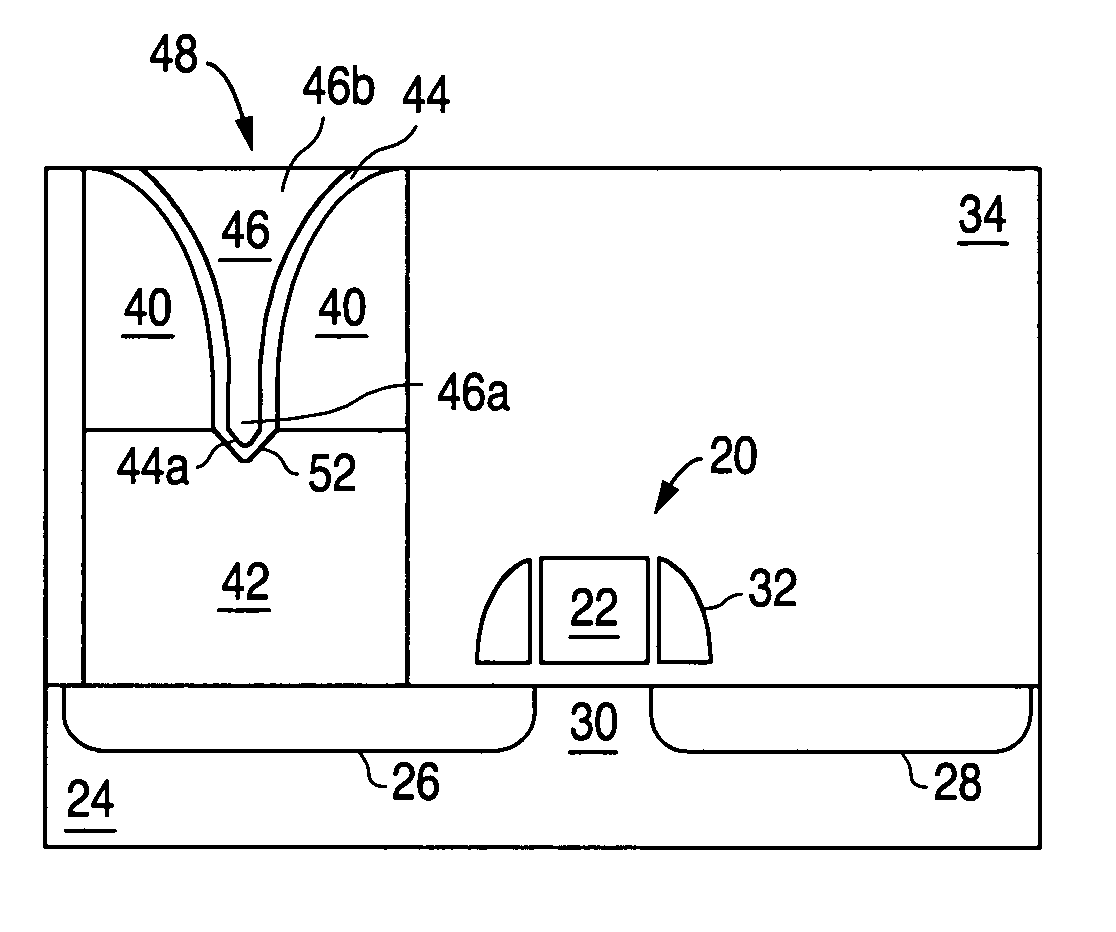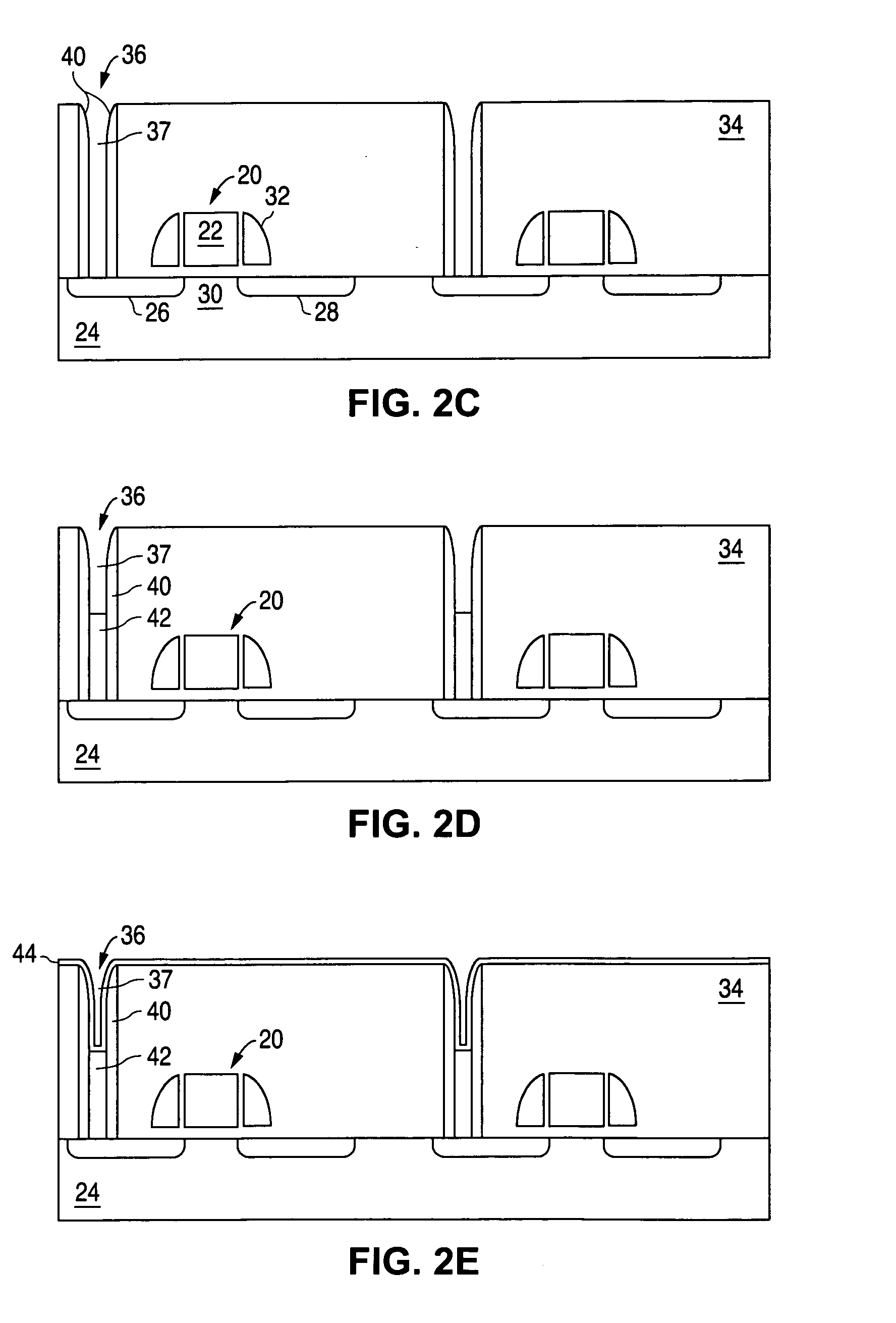Phase change memory device employing thermal-electrical contacts with narrowing electrical current paths
a phase change memory and thermal-electrical contact technology, applied in the direction of bulk negative resistance effect devices, semiconductor devices, electrical equipment, etc., can solve the problems of slow reading and programming, large power consumption, and increasing the difficulty of cell size reduction, so as to reduce the volume of programmed phase change memory material and efficiently focus the generated heat
- Summary
- Abstract
- Description
- Claims
- Application Information
AI Technical Summary
Benefits of technology
Problems solved by technology
Method used
Image
Examples
Embodiment Construction
[0024]The present invention is an improved phase change memory device, and method of making such a device, where the volume of the phase change memory material programmed in the memory cell is reduced, and the heat used to program the memory device is efficiently focused onto that volume of material using a narrowing current path having a minimum cross-section adjacent that volume of material.
[0025]FIGS. 2A to 2F illustrate the formation of the phase change memory cells of the present invention. FIG. 1A illustrates well known MOS FET transistors 20, the formation of which is well known in the art and not described herein in any detail. The MOS FET transistors 20 each include a conductive gate 22 formed over and insulated from a silicon substrate 24. Source and drain regions 26 / 28 (i.e. first and second regions that are interchangeable) are formed in the substrate 24 and have a conductivity type (e.g. N type) different from that of the substrate 24 (e.g. P type). The channel region 3...
PUM
 Login to View More
Login to View More Abstract
Description
Claims
Application Information
 Login to View More
Login to View More - R&D
- Intellectual Property
- Life Sciences
- Materials
- Tech Scout
- Unparalleled Data Quality
- Higher Quality Content
- 60% Fewer Hallucinations
Browse by: Latest US Patents, China's latest patents, Technical Efficacy Thesaurus, Application Domain, Technology Topic, Popular Technical Reports.
© 2025 PatSnap. All rights reserved.Legal|Privacy policy|Modern Slavery Act Transparency Statement|Sitemap|About US| Contact US: help@patsnap.com



